Normally, by this point in the summer, NHL rosters are fairly set and I feel comfortable — if not confident — in publishing my offseason standings predictions.
This year, not so much. There is still lots of uncertainty around the league, as we wait for the Erik Karlsson shoe to drop in Ottawa and that anticipated domino effect.
There is also the Max Pacioretty situation in Montreal, and Carolina could further shake things up at any moment by moving Justin Faulk and/or Jeff Skinner. Plus, a number of teams that missed out on John Tavares have the cap space to improve through trades.
Plenty of trade rumor discussion in here. Karlsson, Panarin, Pacioretty, Skinner, Faulk… some big names could still switch teams this summer https://t.co/gyTurdnA7w
— Derek Neumeier (@Derek_N_NHL) July 21, 2018
I’m bracing for a busier August than usual, so any July predictions might be out the window before training camps open in September and certainly before the puck drops in October.
Nevertheless, now that free agency has run its course for the most part, it is time to tackle my offseason predictions. Time to keep this annual tradition going — for better or worse.
Truth be told, I haven’t been getting any better the past few years. Quite the opposite. I correctly predicted 13-of-16 playoffs teams for 2015-16, 11-of-16 for 2016-17 and only 9-of-16 for 2017-18.
Yes, last season was a rough one for me — getting just 4-of-8 playoff teams right in the Western Conference and 5-of-8 in the Eastern Conference from my offseason predictions.
So this season is all about redemption, or perhaps retirement from the prediction game.
Latest Stanley Cup odds from Bovada: pic.twitter.com/u4rfb5FTaJ
— Mark Stepneski (@StarsInsideEdge) July 2, 2018
It’s tough to say where I’ve been going wrong — I don’t have that answer, yet — and it might simply be the fact that the NHL is becoming less and less predictable from one year to the next. For that, we can both blame and thank parity.
I have also been blamed for putting too much stock in fancy stats, which is funny since I rarely ever reference analytics in my writing. Yes, I do factor the underlying numbers and data into my work — you’d be a fool if you didn’t in 2018 — but a lot of my predictions are still a gut feeling at the end of the day.
That’s the case again this year, where some of my predictions will seem more reasonable or justifiable than others. Some may seem outlandish as of today but, as always, time will tell. So here goes nothing, again . . .
NOTE: In parenthesis is the variation from the final regular-season standings for 2017-18.
Pacific Division
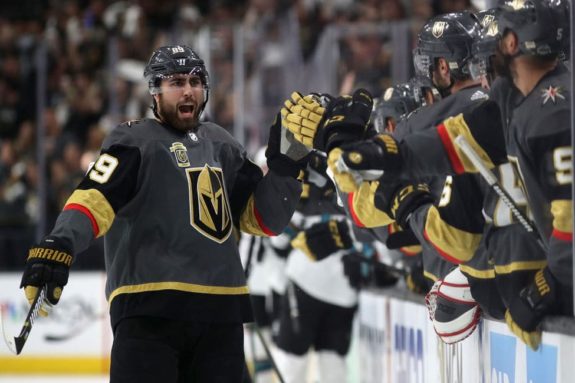
Alex Tuch and the Vegas Golden Knights defied all the odds in making everybody’s predictions look bad by advancing to the Stanley Cup Final in their expansion season. What can Tuch and his teammates do for an encore in 2018-19?
1) Vegas Golden Knights (=)
2) San Jose Sharks (+1)
3) Edmonton Oilers (+3)
4) Calgary Flames (+1)
5) Anaheim Ducks (-3)
6) Los Angeles Kings (-2)
7) Arizona Coyotes (+1)
8) Vancouver Canucks (-1)
Central Division
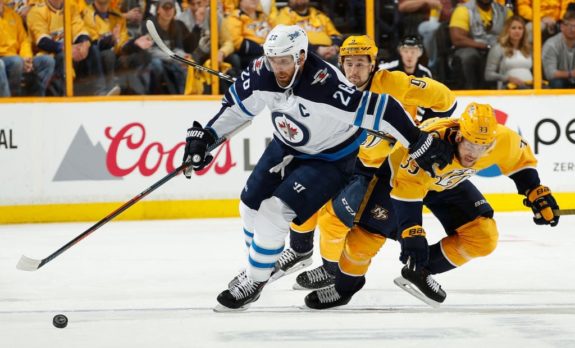
Blake Wheeler and the Winnipeg Jets hit their stride last season and raised expectations for the coming campaign.
1) Winnipeg Jets (+1)
2) Nashville Predators (-1)
3) St. Louis Blues (+2)
4) Colorado Avalanche (=)
5) Dallas Stars (+1)
6) Minnesota Wild (-3)
7) Chicago Blackhawks (=)
Atlantic Division
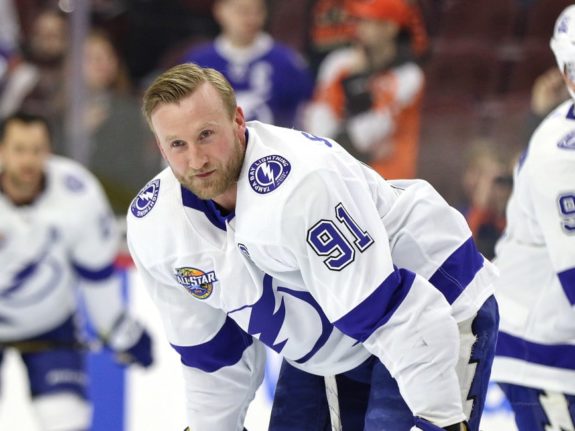
Steven Stamkos and the Tampa Bay Lightning will be looking over their shoulders this season, but do they have enough firepower to stay on top of the Atlantic Division?
1) Tampa Bay Lightning (=)
2) Toronto Maple Leafs (+1)
3) Boston Bruins (-1)
4) Florida Panthers (=)
5) Buffalo Sabres (+3)
6) Detroit Red Wings (-1)
7) Montreal Canadiens (-1)
8) Ottawa Senators (-1)
Metropolitan Division
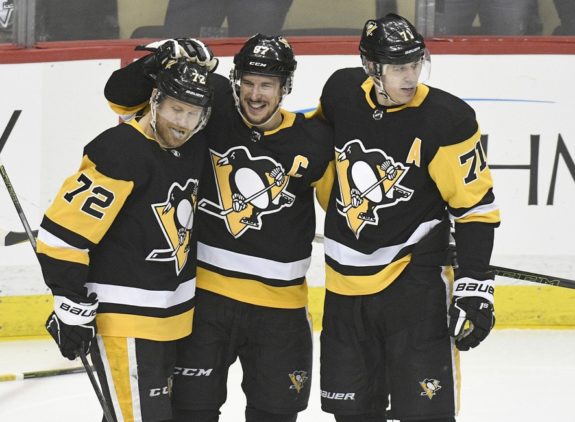
The Pittsburgh Penguins are sticking with their core — including Sidney Crosby, centre, Evgeny Malkin, right, and Patric Hornqvist, left — and that group still matches up well against anyone and everyone in the Metropolitan Division and across the league.
1) Pittsburgh Penguins (+1)
2) Washington Capitals (-1)
3) Philadelphia Flyers (=)
4) Columbus Blue Jackets (=)
5) Carolina Hurricanes (+1)
6) New Jersey Devils (-1)
7) New York Islanders (=)
8) New York Rangers (=)
Western Conference Playoff Picture
First Round
Pacific Division
P1) Vegas Golden Knights vs. WC1) Calgary Flames
P2) San Jose Sharks vs. P3) Edmonton Oilers
Central Division
C1) Winnipeg Jets vs. WC2) Colorado Avalanche
C2) Nashville Predators vs. C3) St. Louis Blues
Second Round
Pacific Division
P3) Edmonton Oilers vs. WC1) Calgary Flames
Central Division
C1) Winnipeg Jets vs. C2) Nashville Predators
Third Round
C1) Winnipeg Jets vs. P3) Edmonton Oilers
Eastern Conference Playoff Picture
First Round
Atlantic Division
A1) Tampa Bay Lightning vs. WC1) Columbus Blue Jackets
A2) Toronto Maple Leafs vs. A3) Boston Bruins
Metropolitan Division
M1) Pittsburgh Penguins vs. WC2) Florida Panthers
M2) Washington Capitals vs. M3) Philadelphia Flyers
Second Round
Atlantic Division
A1) Tampa Bay Lightning vs. A2) Toronto Maple Leafs
Metropolitan Division
M1) Pittsburgh Penguins vs. M2) Washington Capitals
Third Round
A1) Tampa Bay Lightning vs. M1) Pittsburgh Penguins
Fourth Round
Stanley Cup Final
C1) Winnipeg Jets vs. M1) Pittsburgh Penguins
Draft Lottery Order
1) Ottawa Senators (Colorado Avalanche)
2) New York Rangers
3) New York Islanders
4) Vancouver Canucks
5) Montreal Canadiens
6) Detroit Red Wings
7) Arizona Coyotes
8) New Jersey Devils
9) Buffalo Sabres
10) Chicago Blackhawks
11) Minnesota Wild
12) Carolina Hurricanes
13) Dallas Stars
14) Los Angeles Kings
15) Anaheim Ducks
Pacific Division
1) Vegas Golden Knights
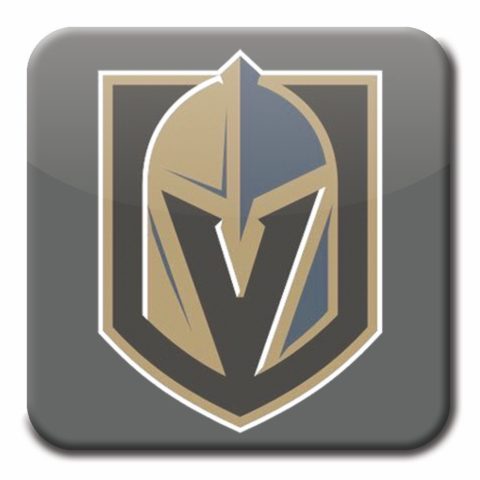 ANALYSIS: The Golden Misfits — the best story in hockey since the turn of the century — won’t sneak up on anybody in their sophomore season. They proved in the playoffs that their expansion campaign was no fluke — that their division-winning success was more than mere luck — but, rest assured, everybody will be taking Vegas seriously from the outset this time around.
ANALYSIS: The Golden Misfits — the best story in hockey since the turn of the century — won’t sneak up on anybody in their sophomore season. They proved in the playoffs that their expansion campaign was no fluke — that their division-winning success was more than mere luck — but, rest assured, everybody will be taking Vegas seriously from the outset this time around.
The Golden Knights are now the team to beat in the Pacific and that will make for many tougher nights, especially with opposing teams knowing what to expect from the new kids on the block in terms of line combinations and systems. Almost everything went right for Vegas in their debut — at least up until Braden Holtby’s miraculous paddle stop in Game 2 of the Stanley Cup Final — so it’ll be difficult to duplicate in an encore.
The Golden Knights lost some scoring on the wings with James Neal (Calgary) and David Perron (St. Louis) departing through free agency, but they got even deeper down the middle with the signing of Paul Stastny. George McPhee might still be able to put a rabbit out of his hat or an ace out of his sleeve if he can land Karlsson from Ottawa, likely with Bobby Ryan in tow.
Either way, I’ve lost enough pride (and money) in betting against Vegas from start to finish in 2017-18, so I’m going to give the Golden Knights the benefit of doubt for 2018-19. They won’t be as good as last season for the reasons mentioned above, but Vegas will come out on top of a highly competitive Pacific Division.
2) San Jose Sharks
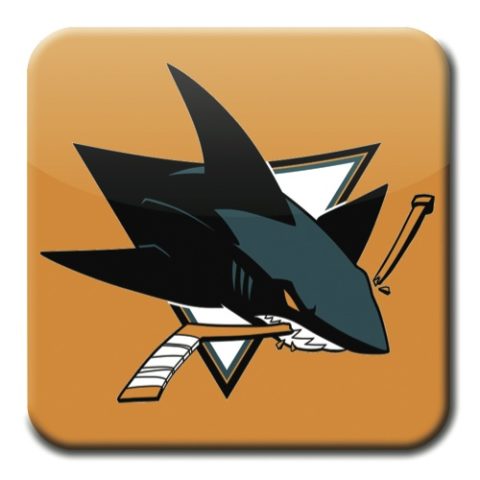 ANALYSIS: The Sharks didn’t win the Tavares sweepstakes, but Doug Wilson still has the cap space to be a pre-season buyer. As mentioned, there are several potential targets in play — perhaps even Phil Kessel from Pittsburgh or Artemi Panarin from Columbus, to throw two more names out there.
ANALYSIS: The Sharks didn’t win the Tavares sweepstakes, but Doug Wilson still has the cap space to be a pre-season buyer. As mentioned, there are several potential targets in play — perhaps even Phil Kessel from Pittsburgh or Artemi Panarin from Columbus, to throw two more names out there.
Joe Thornton is coming back, and as long as he’s in the fold, San Jose will be in win-now mode in hopes of getting their longtime leader that elusive Stanley Cup. The Sharks’ window to win may not last long — with the Joes, Thornton and Pavelski, past their prime — so they may as well go for it while they can.
Logan Couture and Evander Kane are now locked up long-term, and the rest of the core remains the same with Brent Burns and Marc-Edouard Vlasic on the back end, and Martin Jones between the pipes. That group doesn’t scream Cup contender, but I don’t think Wilson is done.
I also think the Sharks are going to grow from within as Tomas Hertl and Timo Meier continue to develop into potent power forwards. The depth is above average and that should keep the Sharks above the playoff cutline for 2018-19.
3) Edmonton Oilers
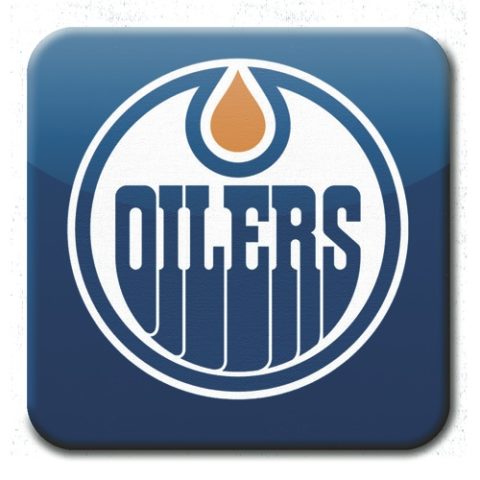 ANALYSIS: The Oilers didn’t improve much on paper — they couldn’t because of their cap crunch — so this prediction will raise eyebrows and probably bring out the ‘homer’ critics. However, I’m never going to bet against Connor McDavid. He’s the best player in the game and becoming one of the best goal-scorers too. Providing McDavid stays healthy, his team should always stay in the playoff picture.
ANALYSIS: The Oilers didn’t improve much on paper — they couldn’t because of their cap crunch — so this prediction will raise eyebrows and probably bring out the ‘homer’ critics. However, I’m never going to bet against Connor McDavid. He’s the best player in the game and becoming one of the best goal-scorers too. Providing McDavid stays healthy, his team should always stay in the playoff picture.
Yes, I realize McDavid had a great year last season and the Oilers missed, but I think Edmonton was making strides in the right direction during garbage time and showing signs of becoming a playoff team again.
For that to happen in 2018-19, Cam Talbot, Milan Lucic and Edmonton’s power play need to rebound. Those three held the Oilers back in 2017-18, prompting an overhaul of the assistant coaches and an overpayment for KHL free agent Mikko Koskinen to solidify the goaltending alongside Talbot. I do think the power play will be improved, with tweaking from Glen Gulutzan and Manny Viveiros, and the other two are veteran players with pride who should still be in their prime. I have more confidence in Talbot returning to form in a contract year than Lucic, but both should be better to some degree.
Depth is something of a concern, particularly on right wing and right-side defence. As a result, the Oilers will be counting on significant contributions from their top prospects — starting with Jesse Puljujarvi but also including Kailer Yamamoto and perhaps even Evan Bouchard. If those three can stick in the NHL and be consistently productive, Edmonton will soar back up the standings. But betting on youth is always a big IF!
That said, the expectations — certainly external — are lower than last season and that might be the biggest factor in the Oilers’ resurgence since their young group should perform better without that pressure. No homer, I like Edmonton’s playoff chances.
4) Calgary Flames
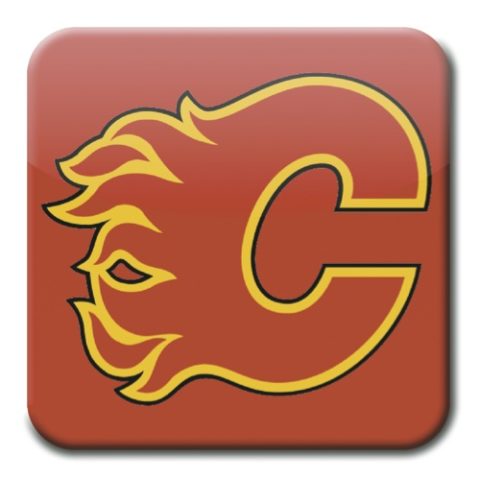 ANALYSIS: The Flames finished ahead of the Oilers last season and have improved their roster much more in the offseason. Calgary now has a good — solid and deep — team on paper thanks to Brad Treliving’s handiwork in acquiring Noah Hanifin and Elias Lindholm from Carolina (for Dougie Hamilton and Micheal Ferland), signing James Neal and Derek Ryan as free agents, and hiring Bill Peters as head coach.
ANALYSIS: The Flames finished ahead of the Oilers last season and have improved their roster much more in the offseason. Calgary now has a good — solid and deep — team on paper thanks to Brad Treliving’s handiwork in acquiring Noah Hanifin and Elias Lindholm from Carolina (for Dougie Hamilton and Micheal Ferland), signing James Neal and Derek Ryan as free agents, and hiring Bill Peters as head coach.
The Flames’ forward group is impressive and should be able to attack in waves with four scoring lines. The defence is decent, albeit overrated in recent years, and the goaltending hinges on Mike Smith’s health.
All in all, Calgary has the makings of a playoff team, but it’s going to be a real battle for these middle-four positions in the Pacific standings. Injuries, luck and head-to-head results will determine which two make the cut. I went with the Alberta clubs over their California foes.
5) Anaheim Ducks
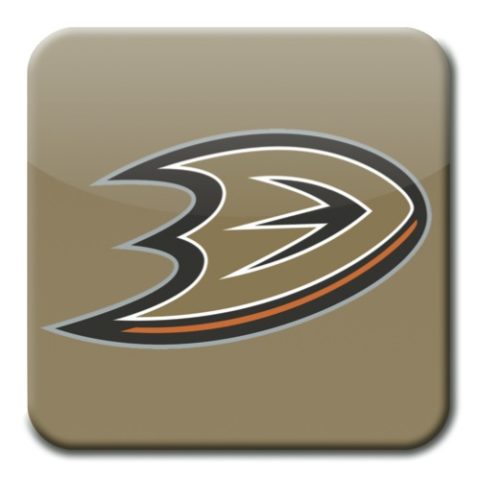 ANALYSIS: This division is tougher to rank than usual and I debated back and forth between these next two before deciding to give the Ducks a slight edge. Anaheim is returning much the same roster that finished second in the Pacific last season, but might be missing Ryan Kesler again for some or all of 2018-19.
ANALYSIS: This division is tougher to rank than usual and I debated back and forth between these next two before deciding to give the Ducks a slight edge. Anaheim is returning much the same roster that finished second in the Pacific last season, but might be missing Ryan Kesler again for some or all of 2018-19.
Without Kesler, I may be inclined to drop the Ducks another spot. This team is trending down, but Ryan Getzlaf should have at least one more good year left in him and Corey Perry should be a bit better than last season too. That old guard will eventually pass the torch, but there isn’t much elite talent there to take it and run.
Rickard Rakell is the real deal, the Ducks’ top four on defence are all in their prime years, and a case can be made for John Gibson as the division’s top goalie. Adam Henrique, Jakob Silfverberg and Ondrej Kase are complimentary pieces, plus Anaheim is expected to get Patrick Eaves back from a season lost to illness. There is some hope that Sam Steel and Troy Terry will be ready to step into regular roles as well, with or without Kesler in the lineup.
So the Ducks aren’t washed up just yet, but the rest of the division might be passing them by and many still believe the game has passed by Randy Carlyle. Bob Murray obviously believes his workhorses can get the job done again, but I have my doubts about Anaheim going forward.
6) Los Angeles Kings
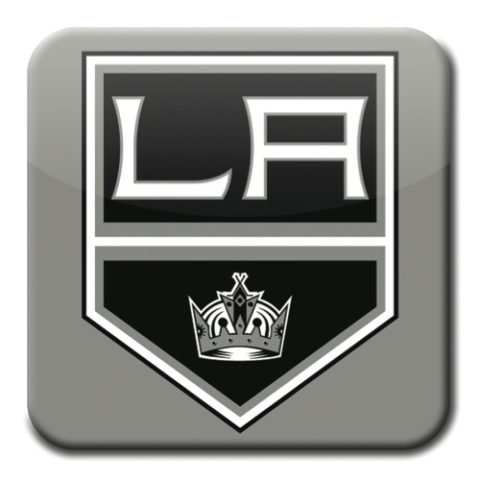 ANALYSIS: The Kings could really go either way. A healthy Jeff Carter, a full season of Dion Phaneuf, and the addition of Ilya Kovalchuk has Rob Blake’s boys looking primed for at least one more playoff appearance. But Anze Kopitar and Dustin Brown could experience letdowns, Jonathan Quick’s body seems to be wearing down, and the forward depth is still lacking for L.A., which was evident during that first-round sweep at the hands of Vegas.
ANALYSIS: The Kings could really go either way. A healthy Jeff Carter, a full season of Dion Phaneuf, and the addition of Ilya Kovalchuk has Rob Blake’s boys looking primed for at least one more playoff appearance. But Anze Kopitar and Dustin Brown could experience letdowns, Jonathan Quick’s body seems to be wearing down, and the forward depth is still lacking for L.A., which was evident during that first-round sweep at the hands of Vegas.
Kovalchuk is the wild card in his return to the NHL and how he clicks with Kopitar — or Carter — will be a big factor in the Kings’ success or lack thereof. If That 70s Line, with Carter centering Tyler Toffoli and Tanner Pearson, can rekindle their chemistry and Kovalchuk can fill the net while flanking Kopitar and Brown, then the Kings could score enough to make the playoffs again.
Los Angeles will get its share of offence from the defence and a healthy Quick can steal low-scoring games in goal. The bottom-six forwards leave a lot to be desired in a division where depth is king, but Adrian Kempe has a lot of upside and Gabe Vilardi might be able to make an immediate impact as a rookie.
The Kings have enough star power, but do they have enough depth and can Quick hold up? Those are the big question marks for me and this placement in the standings suggests I’m leaning towards ‘no’ for those answers.
7) Arizona Coyotes
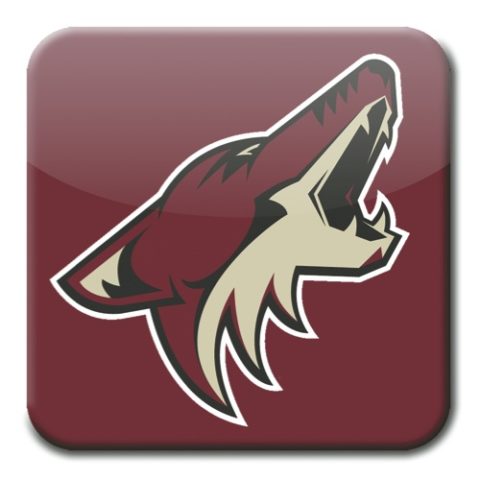 ANALYSIS: Rick Tocchet had the Coyotes playing better hockey in the second half, so there is some optimism in Arizona for 2018-19. Understandable, but I don’t think this team is ready to compete for a playoff spot just yet. It’s possible, sure, but it’s not probable in my opinion.
ANALYSIS: Rick Tocchet had the Coyotes playing better hockey in the second half, so there is some optimism in Arizona for 2018-19. Understandable, but I don’t think this team is ready to compete for a playoff spot just yet. It’s possible, sure, but it’s not probable in my opinion.
Antti Raanta, Alex Galchenyuk and Dylan Strome could change my mind if they all get off to good starts, but my confidence in those three remains lukewarm. Raanta came on strong once healthy and posted some of the league’s better goaltending numbers down the stretch, but those were meaningless games and we’ll see if he can pick up where he left off when the pressure is really on. Galchenyuk needed that change of scenery from Montreal, but his linemates in Arizona won’t be much better unless he’s paired with Clayton Keller. Strome’s deployment has also been puzzling, but he still has a high ceiling if his skating continues to improve.
Arizona’s defence is a strength, though it’s uncertain how much time Jakob Chychrun will miss to start the season. That group should be able to help Raanta keep the goals-against down, but the offence will be a work in progress.
I wasn’t a big fan of picking Barrett Hayton over Filip Zadina and Quinn Hughes at fifth overall. Hayton is further away and may not have elite upside, whereas the other two could have been difference-makers already this season and may have given the Coyotes a push towards the playoffs. I saw that as a missed opportunity and I see this as another building year for Arizona.
8) Vancouver Canucks
 ANALYSIS: The Canucks are planning to sink or swim with their youth in the post-Sedins era. I like that approach, even if I didn’t like the free-agent contracts handed to Jay Beagle, Antoine Roussel and Tim Schaller.
ANALYSIS: The Canucks are planning to sink or swim with their youth in the post-Sedins era. I like that approach, even if I didn’t like the free-agent contracts handed to Jay Beagle, Antoine Roussel and Tim Schaller.
With the 2019 NHL draft in Vancouver next June, the home team should be in the spotlight with another top-10 and likely top-five, if not a top-three pick. Travis Green doesn’t want to hear that and he might be able to get more out of the Canucks than most expect, but Green also shouldn’t have to worry about his job security if they do wind up a lottery team. The coach should be afforded an opportunity to grow with this young group over the next few seasons.
Brock Boeser burst onto the NHL scene as a rookie goal-scoring sensation in 2017-18, and Bo Horvat is the likely candidate to become Vancouver’s new captain as the club’s No. 1 centre. The latter title may transfer to Elias Pettersson in the years to come, with the Swedish teen projected to debut in a prominent role this season. Promising defender Quinn Hughes might also turn pro, leaving college to play in the city where his brother Jack is the favourite to go first overall in 2019.
A portion of Vancouver’s fan base will be hoping to unite the brothers, but owner Francesco Aquilini has always been more of a win-now, butts-in-the-seats type boss. If he can embrace the rebuild, now that the Sedins have retired, it would be in the Canucks’ best interests.
Central Division
1) Winnipeg Jets
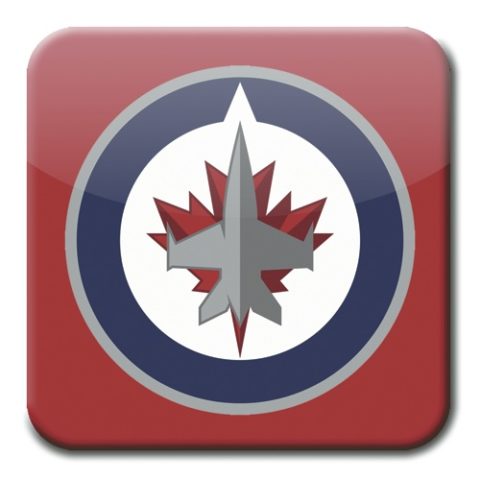 ANALYSIS: The Jets will be reaping the benefits of their draft-and-develop strategy for the better part of the next decade and are primed to take another step this season — even without Stastny.
ANALYSIS: The Jets will be reaping the benefits of their draft-and-develop strategy for the better part of the next decade and are primed to take another step this season — even without Stastny.
That loss will be felt, along with moving Joel Armia to Montreal (as part of the Steven Mason salary dump) and the departure of a character veteran like Matt Hendricks to Minnesota, but Winnipeg can plug those holes from within by promoting the likes of Jack Roslovic, Nic Petan and Brendan Lemieux, or possibly AHL standout Mason Appleton or 2017 first-rounder Kristian Vesalainen. On the blue line, another AHL sensation, Sami Niku, and Joe Morrow will compete for Tobias Enstrom’s playing time.
Kevin Cheveldayoff was quiet in free agency, only adding Laurent Brossoit to compete with Eric Comrie for the backup role, but he was busy locking up his core group, including starting goaltender Connor Helleybuck and defenceman Jacob Trouba, with captain Blake Wheeler also needing an extension as he enters the final year of his contract. Cheveldayoff has set the table so well that he can focus on housekeeping and still ice a team that is favoured to win the division banner.
Winnipeg isn’t the nicest place in the middle of winter, but the Jets are fast becoming the envy of the league and should be seen as a Cup contender for years to come.
2) Nashville Predators
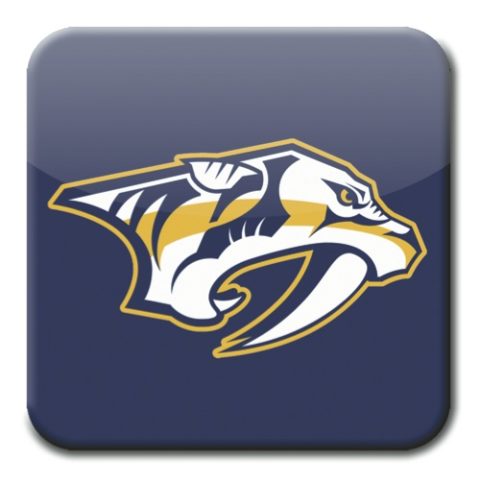 ANALYSIS: The Predators aren’t going anywhere either. Nashville remains stacked and should be a force to reckon with in 2018-19 thanks in large part to David Poile’s ability to negotiate bargain contracts for his best players. That is and will continue to be a key component to the Predators’ on-ice success and roster flexibility. They can build around their core for the foreseeable future.
ANALYSIS: The Predators aren’t going anywhere either. Nashville remains stacked and should be a force to reckon with in 2018-19 thanks in large part to David Poile’s ability to negotiate bargain contracts for his best players. That is and will continue to be a key component to the Predators’ on-ice success and roster flexibility. They can build around their core for the foreseeable future.
That P.K. Subban for Shea Weber blockbuster is, predictably, looking better and better for Nashville with every passing season. The Predators’ top four on defence, with Roman Josi, Ryan Ellis and Mattias Ekholm surrounding Subban, is still the NHL’s best group, though Tampa Bay might take that title if they land Karlsson to go with Victor Hedman, Ryan McDonagh and Anton Stralman. Regardless, Nashville’s defence is elite and its goaltending is upper echelon as well with Pekka Rinne returning to Vezina form last season and Juuse Saros pushing for more action as his successor.
Both Winnipeg and Nashville are equipped to roll four scoring lines, with the Predators getting a boost from a full season of Ryan Hartman and potential Calder candidate Eeli Tolvanen, their 2017 first-rounder who tore up the KHL last season before getting a brief taste of the NHL.
It’s an embarrassment of riches up front for Peter Laviolette and the Predators’ window to win is wide open for a handful of years. Nashville is a playoff lock, but getting past Winnipeg will prove even more difficult this time around.
3) St. Louis Blues
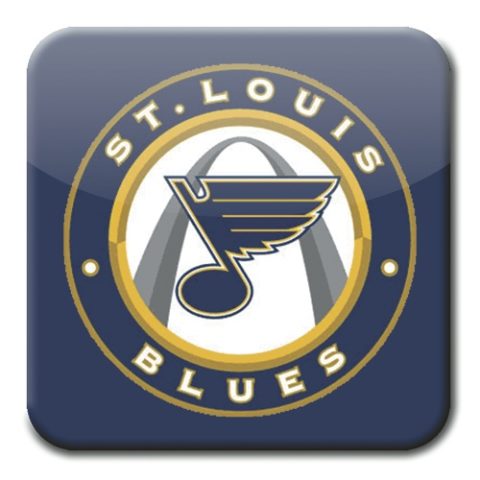 ANALYSIS: The Blues were the most improved team this offseason, adding an entire forward line through free agency with Tyler Bozak, David Perron and Patrick Maroon, while also trading for Ryan O’Reilly. Doug Armstrong deserves mad props for those efforts in retooling St. Louis into a probable playoff team and a possible contender again.
ANALYSIS: The Blues were the most improved team this offseason, adding an entire forward line through free agency with Tyler Bozak, David Perron and Patrick Maroon, while also trading for Ryan O’Reilly. Doug Armstrong deserves mad props for those efforts in retooling St. Louis into a probable playoff team and a possible contender again.
Another team that can run with four scoring lines, the Blues should be able to hold their own against Winnipeg and Nashville, and might be as good as any team in the Pacific despite slotting third in the Central.
St. Louis needs more consistency from Jake Allen and has to hope for healthy seasons from veteran blueliners Jay Bouwmeester and Carl Gunnarsson, though the blue line will be anchored by Alex Pietrangelo, Colton Parayko, Joel Edmundson and Vince Dunn going forward.
That’s a good group overall, a good roster overall, and the pressure now falls on Mike Yeo to get the most out of his new-look squad — even if the most amounts to a first-round playoff exit against the second seed, be it Nashville or Winnipeg.
4) Colorado Avalanche
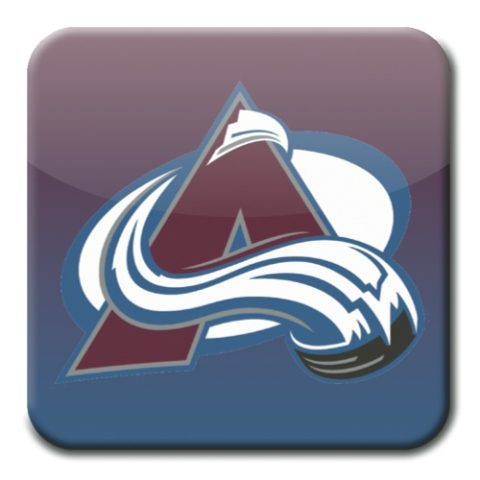 ANALYSIS: The Avs shouldn’t be a one-year wonder, not with Nathan MacKinnon now the superstar most expected him to be, and anticipated growth from the likes of Mikko Rantanen, Tyson Jost, Alex Kerfoot and J.T. Compher up front, plus Samuel Girard and Nikita Zadorov on the back end. They should all take the next step in their development, benefitting from their first playoff experience.
ANALYSIS: The Avs shouldn’t be a one-year wonder, not with Nathan MacKinnon now the superstar most expected him to be, and anticipated growth from the likes of Mikko Rantanen, Tyson Jost, Alex Kerfoot and J.T. Compher up front, plus Samuel Girard and Nikita Zadorov on the back end. They should all take the next step in their development, benefitting from their first playoff experience.
Colorado’s goaltending stands to improve too, with the tandem of Semyon Varlamov and trade acquisition Philipp Grubauer, though Jonathan Bernier also performed admirably last season. The Avs also signed Pavel Francouz from the KHL as an insurance policy in case Varlamov gets hurts again.
Joe Sakic has constructed a young roster that could still go either way — up or down — in one of the league’s more competitive divisions top to bottom, but I like Colorado’s chances of making the playoffs again as a wild-card team. I wouldn’t bet my life savings on the Avs making it, with more veteran teams pushing upward, but I wouldn’t bet against Jared Bednar’s group either.
5) Dallas Stars
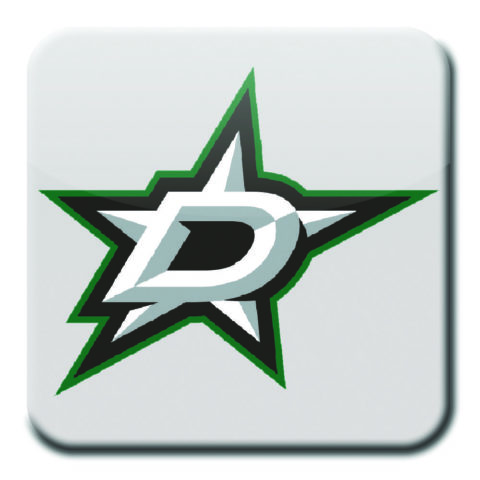 ANALYSIS: If another team, besides St. Louis, were to overtake Colorado this season, my money would be on Dallas. I’m a big fan of the Stars’ new-look coaching staff, with Jim Montgomery and Todd Nelson, and the roster is certainly strong enough to be a playoff team.
ANALYSIS: If another team, besides St. Louis, were to overtake Colorado this season, my money would be on Dallas. I’m a big fan of the Stars’ new-look coaching staff, with Jim Montgomery and Todd Nelson, and the roster is certainly strong enough to be a playoff team.
That becomes more of a certainty if the Stars acquire Karlsson, even if it costs them stud prospect Miro Heiskanen. Jim Nill will continue his efforts to get without giving on that front, and it may depend on Karlsson’s willingness to sign an extension with Dallas, but he’d put the Stars over the top, at least in terms of making the postseason. In Dallas, Karlsson could be reunited with former defence partner Marc Methot, while also playing alongside John Klingberg, Esa Lindell and perhaps Heiskanen and/or Julius Honka. That would be a stacked blue line, but the Stars are solid on the back end even if Karlsson doesn’t come to fruition.
Up front, there’s the big three of Jamie Benn, Tyler Seguin and Alex Radulov, but the Stars were also in the running for Tavares, so you know Nill is still big-game hunting. Montgomery and Nelson might be able to spark a resurgence from Jason Spezza and a breakout from Mattias Janmark or Brett Ritchie. There is more forward depth in Dallas than people realize, especially if Martin Hanzal can get healthy and with Valeri Nichushkin returning from the KHL.
Health is going to be a big factor for the Stars and that extends to Ben Bishop, who is capable of being a top-10 goalie, but I’m expecting Dallas to take a step forward and be knocking on the playoff door or possibly kicking it down. The Stars will be in the wild-card mix in 2018-19.
6) Minnesota Wild
 ANALYSIS: The Wild can return much the same team as last season, when they placed third in the division, and Bruce Boudreau has a track record of success in the regular season. So many pundits will be pencilling Minnesota into a playoff spot again, but I’m not among that majority.
ANALYSIS: The Wild can return much the same team as last season, when they placed third in the division, and Bruce Boudreau has a track record of success in the regular season. So many pundits will be pencilling Minnesota into a playoff spot again, but I’m not among that majority.
This is one of those gut feelings — a hunch without a whole lot of statistical rationale — but I’m sensing the Wild will take a step back in 2018-19, prompting new general manager Paul Fenton to change coaches and put more of his own stamp on the roster for 2019-20.
In saying that, there’s no reason Minnesota can’t make the postseason again. Devan Dubnyk is still a quality workhorse in goal, the top four on defence are a top-10 group providing Ryan Suter fully recovers from his broken ankle, and the forwards are proven to be productive, even if there isn’t much star power. Younger players like Joel Eriksson Ek, Jordan Greenway and Luke Kunin could also take on bigger roles up front.
However, Suter won’t be ready for the start of the season and that’s a massive hole in Minnesota’s lineup. Zach Parise has been battling a bad back in recent years, and Eric Staal and Mikko Koivu are bound to slow down, so there is certainly concern for the Wild’s core. I’m anticipating a challenging season ahead for Boudreau and Co.
7) Chicago Blackhawks
 ANALYSIS: The Blackhawks haven’t really hit the rebuild button, and if Corey Crawford can overcome vertigo, Chicago could finish closer to the top of the division than the bottom. If Cam Ward has to man the crease more often than not, Chicago will be facing an uphill battle again.
ANALYSIS: The Blackhawks haven’t really hit the rebuild button, and if Corey Crawford can overcome vertigo, Chicago could finish closer to the top of the division than the bottom. If Cam Ward has to man the crease more often than not, Chicago will be facing an uphill battle again.
Stan Bowman isn’t throwing in the towel on his core of Jonathan Toews, Patrick Kane, Duncan Keith and Brent Seabrook, along with Crawford. He’s kept that group together, while also bringing back Brandon Saad and Marcus Kruger from past Cup-winning teams. Bowman also signed four-time champion Chris Kunitz, so the Blackhawks seem to be going for it again.
Problem is, Seabrook has slowed from all his hard miles and Chicago’s defence as a whole isn’t what it used to be, which could be a huge problem if Crawford isn’t in goal. There is youth on the way, with Gutsav Forsling, Henri Jokiharju, Adam Boqvist and Nic Beaudin all looking promising to take the torch from Keith, but the current group leaves a lot to be desired.
Chicago’s youth movement is already occurring up front, with Alex DeBrincat and Nick Schmaltz now established, while the likes of Dylan Sikura, Victor Ejdsell, Matthew Highmore and Alexandre Fortin as potential breakout candidates this season, along with Euro signing Dominik Kahun. I also really liked the Blackhawks’ 2018 draft class, with Jake Wise, Niklas Nordgren and Philipp Kurashev joining the forward prospect pool, but they are at least a couple years away from contributing.
You can never count out Chicago, especially if Crawford is healthy, but it seems to me that 2018-19 will be another transitional season for the Blackhawks, who may be forced to blow it up if they bring up the rear in the Central again.
Atlantic Division
1) Tampa Bay Lightning
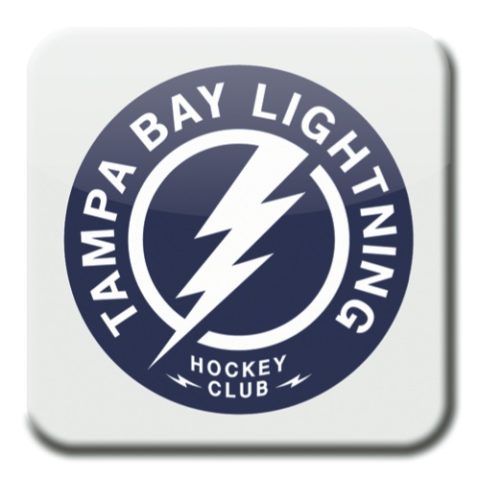 ANALYSIS: The Lightning are still going to be the team to beat in the Atlantic, with or without Karlsson. Tampa Bay does strike me as the most likely landing spot, with Mikhail Sergachev presumably the key piece going to Ottawa. Steve Yzerman tends to get his man, but so does Nill in Dallas, so that battle between former key figures in Detroit will be interesting to watch as the season nears.
ANALYSIS: The Lightning are still going to be the team to beat in the Atlantic, with or without Karlsson. Tampa Bay does strike me as the most likely landing spot, with Mikhail Sergachev presumably the key piece going to Ottawa. Steve Yzerman tends to get his man, but so does Nill in Dallas, so that battle between former key figures in Detroit will be interesting to watch as the season nears.
The Lightning have already locked up Nikita Kucherov and Ryan McDonagh this summer, joining Steven Stamkos and Victor Hedman on long-term contracts from last summer. Andrei Vasilevskiy is living up to the hype in goal and Sergachev is looking like a steal from Montreal if he stays in Tampa. The pieces are in place for a perennial Cup contender and there are more than enough prospects in the system to sustain that success.
Jon Cooper is the perfect coach for this group and Yzerman isn’t one to rest on his laurels, he’ll keep pushing this team forward, but the competition is getting better in the Atlantic and the Lightning may need Karlsson to stay one step ahead in the future.
2) Toronto Maple Leafs
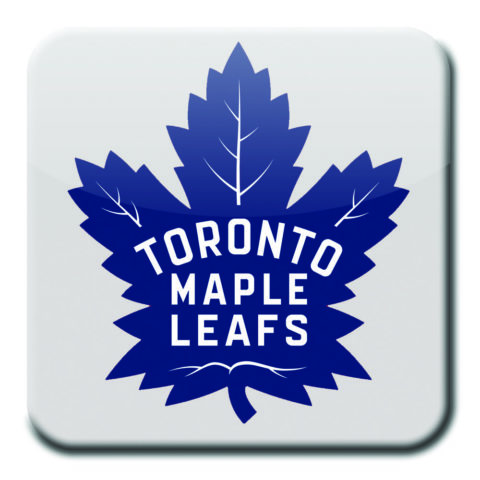 ANALYSIS: The Leafs, with Tavares in the fold, are going to be a force for years to come. Yes, Toronto’s defence is a work in progress, but that top-nine forward group might be the league’s best and Frederik Andersen seems to thrive with a heavier workload.
ANALYSIS: The Leafs, with Tavares in the fold, are going to be a force for years to come. Yes, Toronto’s defence is a work in progress, but that top-nine forward group might be the league’s best and Frederik Andersen seems to thrive with a heavier workload.
That doesn’t mean Mike Babcock will encourage a run-and-gun style, but he’ll have more than enough weapons in his arsenal to outscore the opposition. The best defence is a good offence, right? And Kyle Dubas’ ability to draft and develop — he oversaw the AHL champion Marlies last season — will ensure those weapons keep coming.
It’s too early to be talking dynasty, but this version of the Leafs definitely has the best chance to end Toronto’s Stanley Cup drought and that could happen sooner than later. Some oddsmakers have already listed the Leafs as their Cup favourite for 2018-19, but I’m not convinced Toronto can take out Tampa Bay in that second-round showdown. I do think we’ll get to see that matchup and I can’t wait to watch it play out over a seven-game series.
3) Boston Bruins
 ANALYSIS: And then there’s the rest of the division, with the Bruins still a quality team but not on the same level. Boston is going to start trending backwards but should be a playoff team again in 2018-19.
ANALYSIS: And then there’s the rest of the division, with the Bruins still a quality team but not on the same level. Boston is going to start trending backwards but should be a playoff team again in 2018-19.
The top line of Patrice Bergeron, Brad Marchand and David Pastrnak is elite, Torey Krug and Charlie McAvoy are studs on the back end, and Tuukka Rask is a rock in goal. Zdeno Chara is still going strong, Brandon Carlo should bounce back, and John Moore was a solid addition to Boston’s defence. The Bruins also have young forwards like Jake DeBrusk, Danton Heinen, Ryan Donato and Anders Bjork who will help drive the offence, but Boston just isn’t as good as the top two teams — Tampa Bay and Toronto — or as good as last season in my opinion.
Bruce Cassidy really impressed me as a coach last season, getting more out of the Bruins than I anticipated, so I’ll give him and Boston the benefit of the doubt as the Atlantic’s third seed for the postseason.
4) Florida Panthers
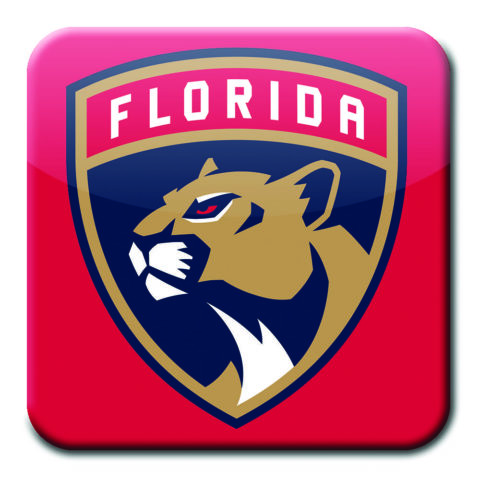 ANALYSIS: The Panthers are something of a tweener team, not good enough to be considered a serious contender but too good to be overlooked in the playoff picture. Florida has a lot of good-not-great pieces but should be in the wild-card mix and may have a shot at overtaking Boston.
ANALYSIS: The Panthers are something of a tweener team, not good enough to be considered a serious contender but too good to be overlooked in the playoff picture. Florida has a lot of good-not-great pieces but should be in the wild-card mix and may have a shot at overtaking Boston.
The Panthers are going to be able to score, with the addition of Mike Hoffman from Ottawa and potential Calder candidate Henrik Borgstrom. Florida’s forward group is looking quite potent for 2018-19, and the defence was always going to be a strength for Bob Boughner’s squad. If the goaltending holds up — if Roberto Luongo can stay healthy and if James Reimer can stay consistent — the Panthers could surprise to some degree.
Florida came on strong in the second half of last season, gaining momentum in Boughner’s first season as coach, and some of those underlying numbers suggest that surge could be a sign of things to come. Many prognosticators will have five teams from the Metro making the playoffs, claiming both wild-card berths, but I’m liking the Panthers’ chances of making the cut.
5) Buffalo Sabres
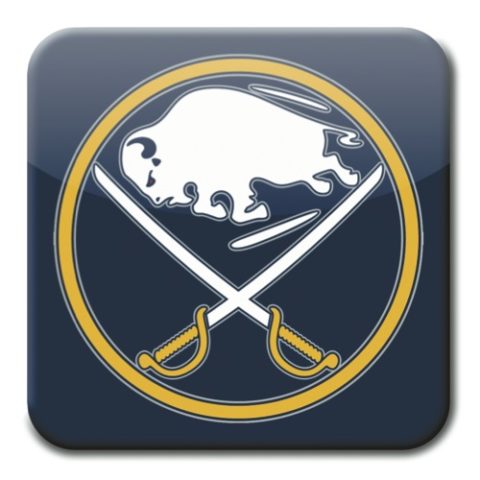 ANALYSIS: I was bullish on Buffalo last season, predicting the Sabres to make the playoffs. Instead, they finished last overall and won the Rasmus Dahlin lottery. I was wrong, but I’m still on Buffalo’s bandwagon as a future contender — led by Dahlin, Jack Eichel and Casey Mittelstadt, along with Rasmus Ristolainen and Sam Reinhart.
ANALYSIS: I was bullish on Buffalo last season, predicting the Sabres to make the playoffs. Instead, they finished last overall and won the Rasmus Dahlin lottery. I was wrong, but I’m still on Buffalo’s bandwagon as a future contender — led by Dahlin, Jack Eichel and Casey Mittelstadt, along with Rasmus Ristolainen and Sam Reinhart.
Buffalo has too many bodies on the back end, but Phil Housley and Steve Smith are going to turn that defence around and settle on a solid group of six this season. There is a lot of bounce-back potential among the forwards too, starting with Kyle Okoposo providing he stays healthy. There could also be some breakout performances and don’t sleep on rookie Victor Olofsson, who could emerge as a legitimate scoring threat.
I do think the Sabres will take a significant step in 2018-19, but I’m not sold on their goaltending tandem of Carter Hutton and Linus Ullmark. I’m not sure how much of an improvement they will be, if any, over Robin Lehner. So that concern held me back from touting Buffalo as a playoff team again. Realistically, the Sabres are probably still a bottom-10 team, but I wouldn’t be shocked if they exceeded those expectations and made a little noise by hanging around in the playoff race.
6) Detroit Red Wings
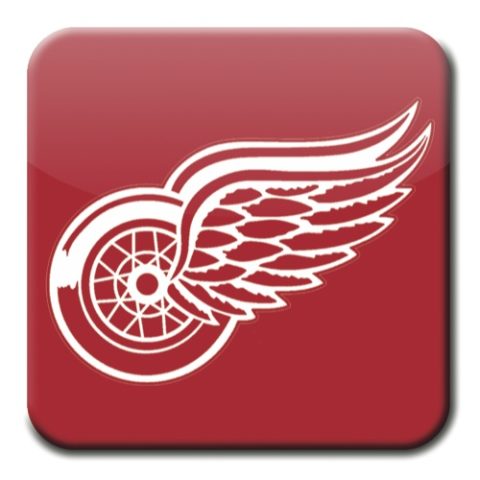 ANALYSIS: There will likely be a drop-off from the top four teams in the Atlantic, with Detroit among the bottom four. Buffalo could create a bit of separation in fifth too — if its goaltending performs adequately — but I don’t think the Red Wings will be a factor as far as the playoffs go in 2018-19.
ANALYSIS: There will likely be a drop-off from the top four teams in the Atlantic, with Detroit among the bottom four. Buffalo could create a bit of separation in fifth too — if its goaltending performs adequately — but I don’t think the Red Wings will be a factor as far as the playoffs go in 2018-19.
Detroit had a terrific showing in last month’s draft and could get a boost from its youth if top-10 picks Filip Zadina and Michael Rasmussen both prove NHL-ready out of training camp. Ditto on defence, where Filip Hronek and Joe Hicketts will look to make the jump.
The goaltending should be solid, but not spectacular with Jimmy Howard and Jonathan Bernier. And Detroit has decent veterans throughout the lineup — led by Henrik Zetterberg, assuming he’s not retiring — but the Red Wings are definitely a team in transition. Ken Holland won’t be a buyer this season and Jeff Blashill’s job security is probably in question now that Dan Bylsma has joined his staff.
I’m not expecting much from Detroit — or any of these bottom three teams in the Atlantic, all of whom are bottom 10 in the league for me — but I’ve been wrong before.
7) Montreal Canadiens
 ANALYSIS: The Canadiens also did very well in the 2018 draft as Trevor Timmins continues to stockpile talent for an eventual rebuild. Marc Bergevin hasn’t hit that button yet, instead trying to retool on the fly, but Montreal may as well move in that direction considering how stacked the top of this division is becoming with Tampa Bay, Toronto and, in due time, Buffalo.
ANALYSIS: The Canadiens also did very well in the 2018 draft as Trevor Timmins continues to stockpile talent for an eventual rebuild. Marc Bergevin hasn’t hit that button yet, instead trying to retool on the fly, but Montreal may as well move in that direction considering how stacked the top of this division is becoming with Tampa Bay, Toronto and, in due time, Buffalo.
The Canadiens have been built around Pacioretty, Shea Weber and Carey Price. Unfortunately, those players will no longer be effective — let alone stars — by the time a proper supporting cast is in place. That’s why Pacioretty is soon to be gone, and if there were any takers for the contracts of Weber or Price, Bergevin would have to start listening at this point since the writing is on the wall that the Canadiens won’t be winning a Cup with those three in leading roles.
It’s time for a new plan in Montreal, with Jonathan Drouin, Max Domi, Brendan Gallagher, Victor Mete and Noah Juulsen among the next wave of talent, along with Jesperi Kotkaniemi, Ryan Poehling and a collection of other prospects working their way up the ranks. The future could be bright — or brighter — but the present appears quite bleak for the Canadiens. If Bergevin can get decent returns for his aging stars and Timmins can keep up his good work at the draft, the Habs will have a hope again in a few years.
8) Ottawa Senators
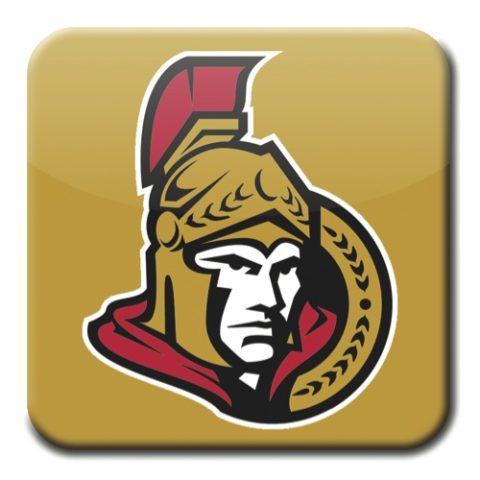 ANALYSIS: The Senators are in awful shape as it is, but could be losing Karlsson, Matt Duchene and Mark Stone by this time next year. They need to maximize the returns on those assets — especially Karlsson, their franchise player — and move on with the rebuild.
ANALYSIS: The Senators are in awful shape as it is, but could be losing Karlsson, Matt Duchene and Mark Stone by this time next year. They need to maximize the returns on those assets — especially Karlsson, their franchise player — and move on with the rebuild.
Pierre Dorion has the least enviable job in hockey right now, knowing there is no chance of re-signing Karlsson as long as Eugene Melnyk is Ottawa’s owner. There could be a mass exodus, with Duchene and Stone also eligible for free agency in 2019. Craig Anderson is apparently on the outs too.
That would turn the team over to Brady Tkachuk and Thomas Chabot, Colin White and Logan Brown, Jacob Bernard-Docker and Jonny Tychonick. The list of promising prospects goes on — Filip Gustavsson, Alex Formenton, Drake Batherson, Christian Wolanin and Filip Chlapik, to name some more — but none of them project as superstars.
Jack Hughes, the favourite to go first overall in 2019, has that superstar potential, but Ottawa won’t have a chance at him since the Senators traded their first-round pick to Colorado as part of the package for Duchene. Thus there is a possible disaster brewing for Ottawa, should Duchene end up walking as a free agent while the Senators wind up handing Hughes to Colorado by being as bad as most are anticipating this season.
Relocation might be the only option for Melnyk at that point. Yes, it’s getting that bad for Ottawa.
Metropolitan Division
1) Pittsburgh Penguins
 ANALYSIS: The Penguins are going to push back this season after being dethroned as two-time champions. The Metro Division might still be the NHL’s toughest — at least in the top four — but Pittsburgh is still built to win it all.
ANALYSIS: The Penguins are going to push back this season after being dethroned as two-time champions. The Metro Division might still be the NHL’s toughest — at least in the top four — but Pittsburgh is still built to win it all.
A full season of a healthy Derick Brassard will make a big difference, and Jim Rutherford added some decent depth by signing Sidney Crosby’s buddy Jack Johnson to solidify the defence, while also bringing back Matt Cullen and bringing in Derek Grant and Jimmy Hayes to flesh out the forward group. The Penguins are also planning to bring up Daniel Sprong on a full-time basis, giving their offence another boost.
Pittsburgh needs to stay healthy, particularly Kris Letang and Matt Murray, as well as Crosby and Evgeni Malkin, but on paper the Penguins are as good as anybody in my opinion. If Phil Kessel and coach Mike Sullivan can get back on the same page, and if the team comes out playing with a chip on its shoulder — driven to reclaim the Cup — then Pittsburgh could prove unstoppable in 2018-19.
2) Washington Capitals
 ANALYSIS: There’s always a bit of a Stanley Cup hangover — maybe more so for Alex Ovechkin — but now that the Capitals know how to win, they will have a new swagger and will be difficult to beat come playoff time.
ANALYSIS: There’s always a bit of a Stanley Cup hangover — maybe more so for Alex Ovechkin — but now that the Capitals know how to win, they will have a new swagger and will be difficult to beat come playoff time.
Returning much of the same roster and presumably the same systems under promoted coach Todd Reirden, the results shouldn’t change much for the Capitals. Washington’s core is all in its prime, with John Carlson now locked up long-term, and the only losses being Brooks Orpik, Jay Beagle and backup goalie Philipp Grubauer, along with coaches Barry Trotz and Lane Lambert. Trotz is a proven bench boss and I think he’ll be missed more than people realize, but Reirden had been groomed to take over if Washington didn’t win the Cup and some see that as a lateral move since he was already on the staff.
Hangover jokes aside, Ovechkin and the Capitals are going to be every bit as dangerous this season and should be considered a strong candidate to defend their title — especially if they can defeat the Penguins in the second round again.
3) Philadelphia Flyers
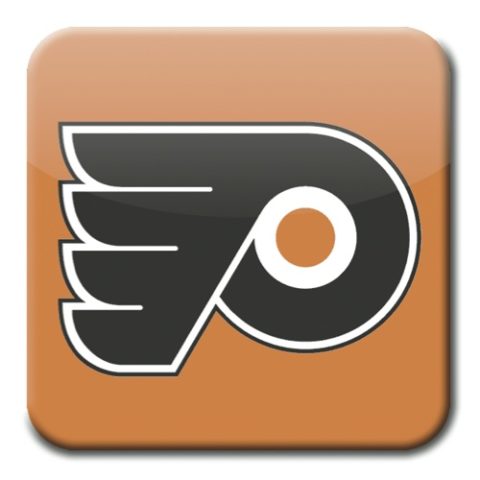 ANALYSIS: The Flyers got better by bringing back James van Riemsdyk, but I honestly don’t see much changing in the Metro standings. I was tempted to rank all eight teams in the same order that they finished last season.
ANALYSIS: The Flyers got better by bringing back James van Riemsdyk, but I honestly don’t see much changing in the Metro standings. I was tempted to rank all eight teams in the same order that they finished last season.
Philadelphia is stacked at forward — boasting one of the best groups of 12 in the entire league — but remains one of the weaker teams in goal and just above average on defence. I won’t say mediocre on defence because Ivan Provorov, Shayne Gostisbehere and Travis Sanheim are anything but mediocre.
That word is better suited for the Flyers’ goaltending, where Brian Elliott and Michal Neuvirth have been a below-average tandem, though Carter Hart is the best prospect to come out of the WHL since Carey Price. Hart may not need much seasoning in the AHL and could get called up to Philadelphia at some point and perhaps be the Flyers’ starter for the playoffs. That would be asking a lot of a rookie pro, but Hart is a pretty special talent, so I wouldn’t rule out that possibility. Rest assured, Ron Hextall won’t accept mediocrity again this season.
The Flyers will be in tough regardless of who they face in the first round of the postseason and it would only get tougher if they managed to make the second round of that Metro bracket. But Philadelphia is looking good to be playoff bound again and to be improved overall with van Riemsdyk returning to the fold and assuming Nolan Patrick takes the next step in his development.
4) Columbus Blue Jackets
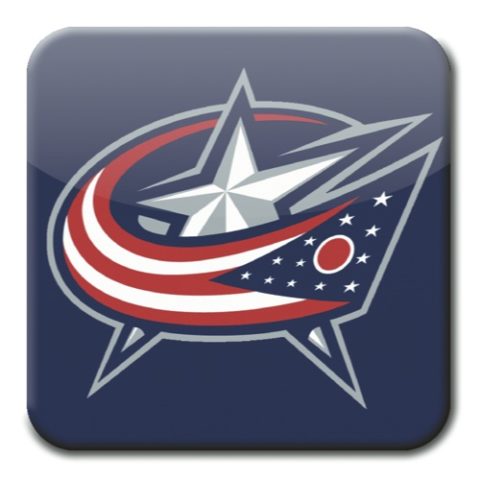 ANALYSIS: This might be a make-or-break year for Jarmo Kekalainen, John Tortorella and the Blue Jackets, with Sergei Bobrovsky and Artemi Panarin both eligible for free agency in 2019. Columbus would like to keep both and build around them, but those decisions may depend on how the season plays out — assuming both are on the roster when training camp begins.
ANALYSIS: This might be a make-or-break year for Jarmo Kekalainen, John Tortorella and the Blue Jackets, with Sergei Bobrovsky and Artemi Panarin both eligible for free agency in 2019. Columbus would like to keep both and build around them, but those decisions may depend on how the season plays out — assuming both are on the roster when training camp begins.
The Blue Jackets gave the Capitals a good run in the first round, so that shows Columbus isn’t far off, but this division is full of contenders and it is difficult to make any headway in the standings. Riley Nash and Anthony Duclair were decent additions, and Rick Nash might still come full circle in his career, with Columbus a reported frontrunner if he decides against retirement. The forward group will be good and relatively deep regardless, with the defence and goaltending shaping up essentially the same as last season.
It does appear Kekalainen would like to take another shot with this roster and would prefer not to trade Panarin. Bobrovsky hasn’t come up in trade rumours, but he needs to step it up in the playoffs to cement himself as Columbus’ long-term starter. First things first, the Blue Jackets need to make the playoffs again, but they are a good bet to get in as a wild card and crossing over to the Atlantic bracket could be in the cards for Columbus. Not that things get any easier there, facing Tampa Bay and Toronto in comparison to Pittsburgh and Washington.
5) Carolina Hurricanes
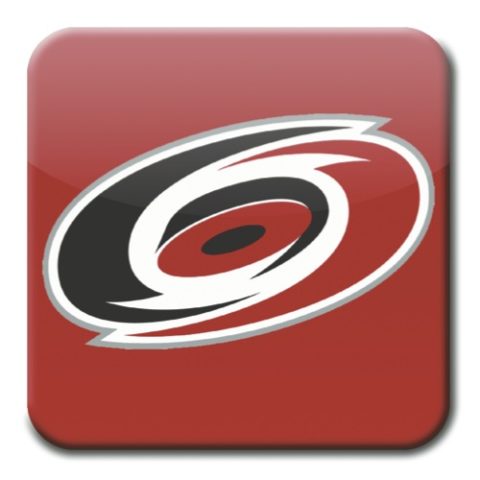 ANALYSIS: I debated between Carolina and New Jersey for the fifth seed — and whether either of them were better than Florida for the Eastern Conference’s second wild-card spot. Florida won out on the latter front, but the more I looked at Carolina’s roster, the more I took a liking to the group that Rod Brind’Amour will be working with in his head-coaching debut.
ANALYSIS: I debated between Carolina and New Jersey for the fifth seed — and whether either of them were better than Florida for the Eastern Conference’s second wild-card spot. Florida won out on the latter front, but the more I looked at Carolina’s roster, the more I took a liking to the group that Rod Brind’Amour will be working with in his head-coaching debut.
Carolina will be bolstered by two top forward prospects in Andrei Svechnikov and Martin Necas, and two new top-four defenders in Dougie Hamilton and Calvin de Haan. The Hurricanes will also have a new goaltender, with Petr Mrazek coming in on a one-year contract with plenty to prove, while Scott Darling will also be determined to rebound from a rough campaign in his first chance as an NHL starter.
Those two should push each other, but neither of them instill much confidence as of today. Goaltending still has to be considered a weakness for Carolina and, like Buffalo, was the reason I resisted putting the Hurricanes into the postseason. If Mrazek and/or Darling perform to the league’s average in terms of save percentage, that could bode well for Carolina’s playoff chances, but I wasn’t willing to bet on those netminders.
I may change my mind — for better or worse — on the Hurricanes once Don Waddell and Rick Dudley decide what they’re doing with Justin Faulk and Jeff Skinner. Assuming they are both traded before training camp, those returns will definitely impact Carolina’s outlook for 2018-19.
6) New Jersey Devils
 ANALYSIS: The Devils were one of the biggest surprises last season, along with Vegas and Colorado. Taylor Hall had a career year in winning the Hart Trophy and Ray Shero worked his share of magic in overseeing New Jersey’s turnaround. However, of those three teams, I do feel like the Devils — more so than the Golden Knights and Avalanche — could regress in 2018-19 and miss the postseason.
ANALYSIS: The Devils were one of the biggest surprises last season, along with Vegas and Colorado. Taylor Hall had a career year in winning the Hart Trophy and Ray Shero worked his share of magic in overseeing New Jersey’s turnaround. However, of those three teams, I do feel like the Devils — more so than the Golden Knights and Avalanche — could regress in 2018-19 and miss the postseason.
I don’t want to call New Jersey a one-year wonder, but I also wouldn’t label the Devils a perennial playoff team going forward. Shero has had a very quiet offseason, much too quiet for a team that arguably overachieved. A lot of things went right for New Jersey in 2017-18 and John Hynes has to hope for a repeat performance from Hall as well as the sophomore trio of Nico Hischier, Jesper Bratt and Will Butcher. The Devils will also need better efforts from Pavel Zacha, Damon Severson and Cory Schneider to stay in the playoff mix.
Schneider is the key here — he’s still the starter for New Jersey over Keith Kinkaid — and, if fully healthy, could be capable of backstopping the Devils to the postseason again. I just feel there are a lot of “ifs” surrounding New Jersey and a fair number of holes on the roster too, so I’m not overly optimistic and I guess you could call me pessimistic at this point.
7) New York Islanders
 ANALYSIS: The Islanders lost a lot in losing Tavares to Toronto and have thus far failed to replace his presence. I do feel bad for Lou Lamoriello and Barry Trotz for leaving much better situations in hopes of retaining Tavares and taking the Islanders to another level.
ANALYSIS: The Islanders lost a lot in losing Tavares to Toronto and have thus far failed to replace his presence. I do feel bad for Lou Lamoriello and Barry Trotz for leaving much better situations in hopes of retaining Tavares and taking the Islanders to another level.
That won’t be happening now — at least not in 2018-19, with the Islanders looking more like a lottery team than a playoff team on paper. Lamoriello has been bashing the panic button by signing the likes of Jan Kovar (from the KHL), Valtteri Filppula, Leo Komarov and Tom Kuhnhackl, while re-acquiring Matt Martin and locking up little-known Ross Johnston long term. Lamoriello checked off the toughness box, but not much else with those head-scratching moves. The goaltending might be better with Robin Lehner replacing Jaroslav Halak, but that won’t be enough to save the season for the Islanders.
I’m a big fan of Mathew Barzal, but he’s not going to be the saviour either. Barzal is going to see all the toughest matchups and top defence pairs as a sophomore, so expect him to take a step back statistically as he adjusts to that extra attention as the face of this franchise going forward.
The good news is the Islanders killed it in the 2018 draft and Oliver Wahlstrom will eventually be the perfect triggerman for Barzal. The prospect pool is promising, but the current roster just isn’t the same without Tavares. That is the biggest hole in the league right now — Karlsson’s might be bigger once he leaves Ottawa — and the Islanders don’t have much hope of filling it in the present. Therefore, the Islanders don’t have much hope of making the playoffs, which could also lead to trading pending free agents Jordan Eberle and Anders Lee rather than losing them for nothing like Tavares. Cue the rebuild and try to be competitive again by the time that new rink is built.
8) New York Rangers
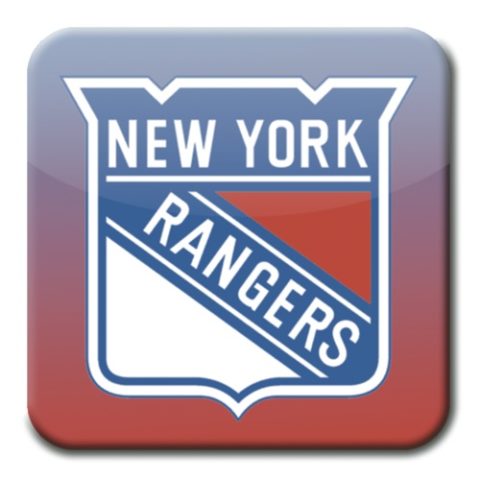 ANALYSIS: The Rangers may bring up the rear again in the ultra-competitive Metro, but their rebuild is already on track and they will be the better of the two New York teams before long. It’s a fresh start for the Rangers, with general manager Jeff Gorton and David Quinn’s new-look coaching staff taking on the challenge of returning one of the league’s flagship franchises to prominence over the next three to five seasons.
ANALYSIS: The Rangers may bring up the rear again in the ultra-competitive Metro, but their rebuild is already on track and they will be the better of the two New York teams before long. It’s a fresh start for the Rangers, with general manager Jeff Gorton and David Quinn’s new-look coaching staff taking on the challenge of returning one of the league’s flagship franchises to prominence over the next three to five seasons.
Expectations are low for 2018-19, with most projecting the Rangers to be in the running for Jack Hughes, but there is a slight chance this team could surprise. We all know Henrik Lundqvist can steal games and the rest of the roster has a fair bit of upside. Training camp will be a proving ground as Quinn, with the help of holdover Lindy Ruff, tries to find the right fits for his forward lines and defence pairings. That will likely be a work in progress over the course of the season, but Quinn has no shortage of options at his disposal.
This should be a fun team to watch in its development — this season and going forward — but the Rangers’ fan base should brace for the worst while hoping for the best. Think short-term pain for long-term gain and let Gorton take his time in putting the pieces together for a future contender. Patience is the keyword here, though not a word that often resonates in New York.
Stanley Cup Prediction
My Stanley Cup Final pits the resurgent Pittsburgh Penguins against the upstart Winnipeg Jets in a battle of division winners based on my standings.
Winnipeg would have home-ice advantage thanks to a better regular-season record, but Pittsburgh’s playoff experience could tilt the ice in any series.
I do feel like Crosby, Malkin and Letang have another Cup left in them — with or without Kessel — so I’m taking the Penguins in six games. Winning three championships in four years and four titles in the last decade would make Pittsburgh a modern-day dynasty. Ironically, or maybe not, this is the exact same result that I had for my 2018 playoff predictions, but I’m going with it again.
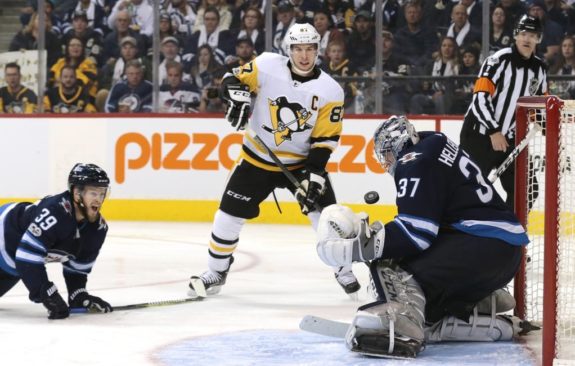
Connor Hellebuyck and the Winnipeg Jets are getting closer to capturing that franchise’s first Stanley Cup, but their breakthrough will have to wait at least another year according to my predictions, which have Sidney Crosby and the Pittsburgh Penguins winning another title in 2019.
That’s how I foresee the 2018-19 NHL season playing out as of today — as of July 22 — but this is your chance to change my mind in the comments below. Who do you got winning the Cup? Or how do you envision the standings stacking up?